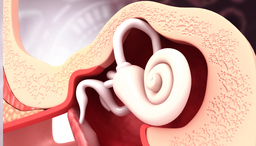Tegmen Plate
TECHNOLOGY NUMBER: 6846

OVERVIEW
Method for creation of patient-specific plastic plates for repair of the tegmen tympani- Utilizes computer-aided design software to guide additive manufacturing techniques
- The customized plastic polymer plate is chemically inert and has bone density
BACKGROUND
Twenty percent of individuals develop holes in the tegmen tympani, a thin plate of bone that separates the middle ear from the brain. Defects in the tegmen create risk for severe and life-threatening complications including meningitis, cerebral spinal fluid leakage and brain herniation into the middle ear cavity. Small tegmen defects can be repaired by plugging with bone cement or similar material, while larger or multiple defects require more invasive surgical procedures. Surgery often involves removing a segment of bone from another region of the skull to patch over the defect, though manual customization of bone fragment grafts is time consuming. Additionally, the repair of larger defects is more complex because larger bone grafts are more difficult to harvest and customize to the site in need. As such, a need exists for improved methodologies to create custom grafts for patients undergoing surgery for tegmen tympani defects.
INNOVATION
Researchers have invented a medical device that repairs or replaces cranial bone defects such as those which may occur in the tegmen tympani. A computerized tomography (CT) scan of the area is completed to permit the creation of a virtual three dimensional (3D) model of the temporal bone. Computer-aided design (CAD) software creates a virtual repair of the defect, allowing production of a plastic polymer plate using additive manufacturing techniques. The CAD model utilizes device specifications which optimize functionality of the plate, including a thickness of 1.5 mm, rounding of the edges, and elevation off the tegmen by 0.3 mm. The plastic polymer that is used is a polyetherketoneketone (PEKK), which is chemically inert and has a density and stiffness similar to natural bone. The design has been validated in three cadaveric temporal bone repairs using a surgical drill to create defects and customized plates to repair the defect.